Simon Sleep’s 1970 Bedford KM has been attending shows for many years, yet still replicates a cared-for working tipper. says Peter Simpson.
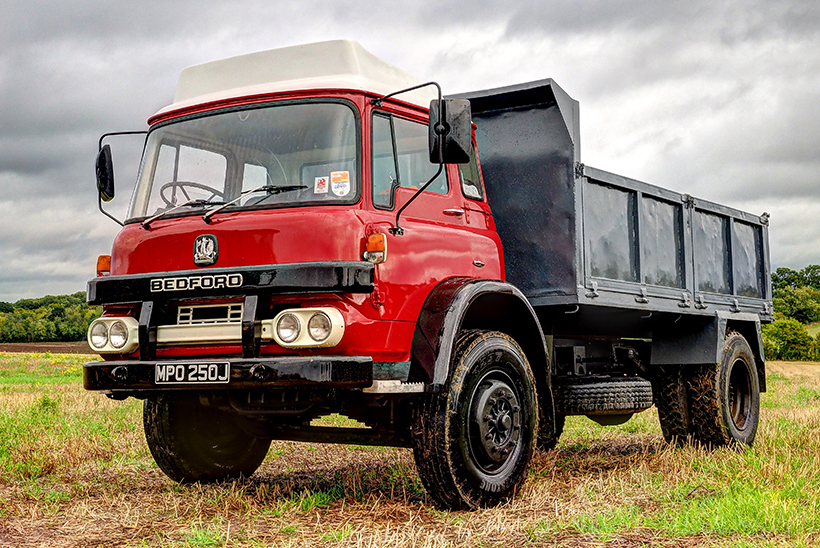
Back in January, our main cover-feature lorry was Simon Sleep’s Bedford KM skip lorry, a vehicle which emerged onto the show scene relatively recently, and been much-admired.
However, this isn’t the only KM in Simon’s collection of six old lorries, plus three others that are owned jointly with others. For the past 15 years, he’s owned this fine KM tipper, and it is often shown alongside the skip lorry. However, unlike the skip lorry, the tipper has been restored in very much working clothes condition, and as such it replicates many such lorries in regular use at 10-plus years old and with second, third or fourth owners.
To begin, a brief recap on the people involved. Simon is in his early 50s and now runs Kenilworth-based Warwickshire Waste, a company with five O licences and drivers. They offer a full range of mini and full-size skip hire services plus mini-digger (with driver) hire and groundworks services. Their fleet are a familiar sight in and around Kenilworth.
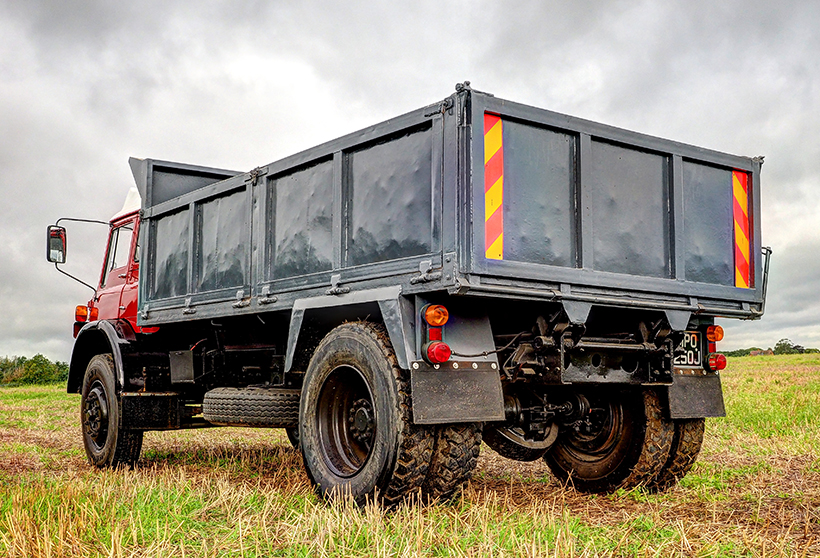
Like many old-lorry people however, Simon has assistance with his various projects, and in this case that comes from Len Sabin, a spritely 73 year old whom Simon first met shortly after he started driving, and who, many years later went to work for him after being made redundant by a long-term employer following a series of ownership changes.
Len initially drove a grab lorry for Simon. Then on retirement, he moved over to work on maintaining and restoring the classic fleet three days a week “because I enjoy it.” Definitely a hands-on tools person, Len says that he did buy an iPad, having been recommended to do so as a means of passing time “but I pressed a wrong button and it stopped working.”
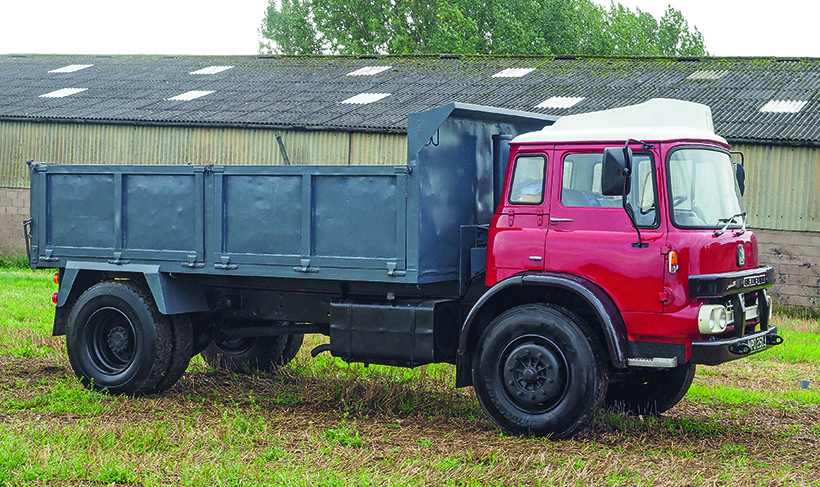
Len is also one of those absolutely irreplaceable people who have been around lorries their entire life. In Len’s case he’s been on the spanners and, since taking his HGV test through the Road Transport Industry Training Board in 1976, driving. His experience dates back to the early 1960s, when the Bedford TK was the new thing and hugely popular. At the other end of the spectrum however there was still a sprinkling of pre-war lorries around, albeit coming to the end of their working lives and in need of regular attention.
He therefore has first-hand experience of things like Austin Ks, Guys, Bedford WTs and similar. By comparison with stuff like this, the TK was “like a Rolls-Royce in terms of driving and maintenance”, and Len has remained a firm fan of the type ever since.

Unsurprisingly then, the KM we’re featuring here is, in Simon’s words, “Len’s pride and joy.” It was also the first lorry into Simon’s collection, and was bought because the skip lorry that he really wanted was proving elusive, and he had basically given up on finding one anytime soon. A situation which, as we saw in January, has since changed…
Anyway, MPO250J was bought from Macclesfield-based David Burns, who had bought it to restore but never quite got round to it. Its working life is uncertain – and of course any definitive information readers can provide would be much-appreciated – but it is thought to have been based in or around London, possibly with a market-gardener. It’s got a Bedford 466 engine, five-speed gearbox and axle and was acquired as a tipper, though if it was a market gardener’s lorry, it’s unlikely to have been one from new.
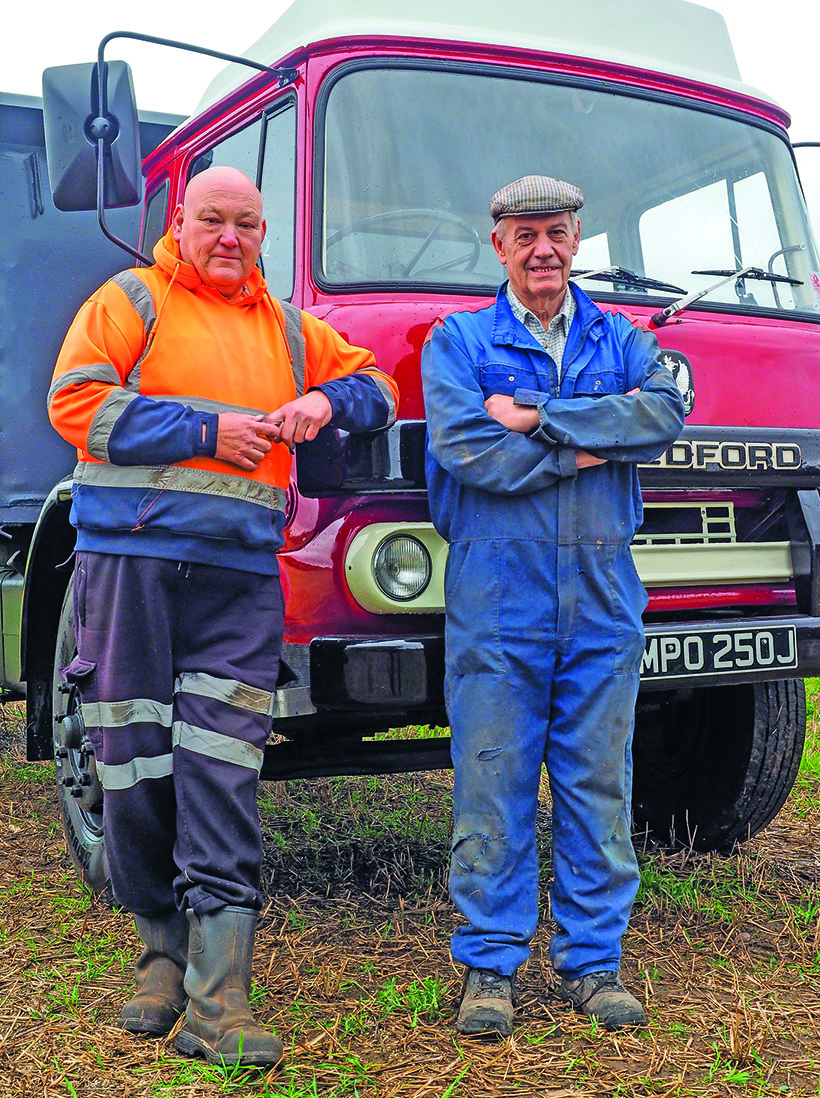
When acquired it had been “standing about for some time and was very rotten to say the least.” At this point, it’s relevant to point out that when this restoration was undertaken, Len was still working for Simon as a full-time driver, and this was very much a spare-time project for everyone involved, and the maintenance and other needs of the working Warwickshire Waste fleet always having to take priority.
The restoration
As expected, the cab proved to be terminally corroded. Fortunately though, the lorry came with a significant quantity of parts which the previous owner had assembled for the restoration, including a better replacement cab taken from an ex-Axion Builders’ Merchants TK. But there was still a problem; the old cab was so bad that it couldn’t even be lifted off using the usual ‘pole through the window apertures’ method. Eventually, it was removed using straps.
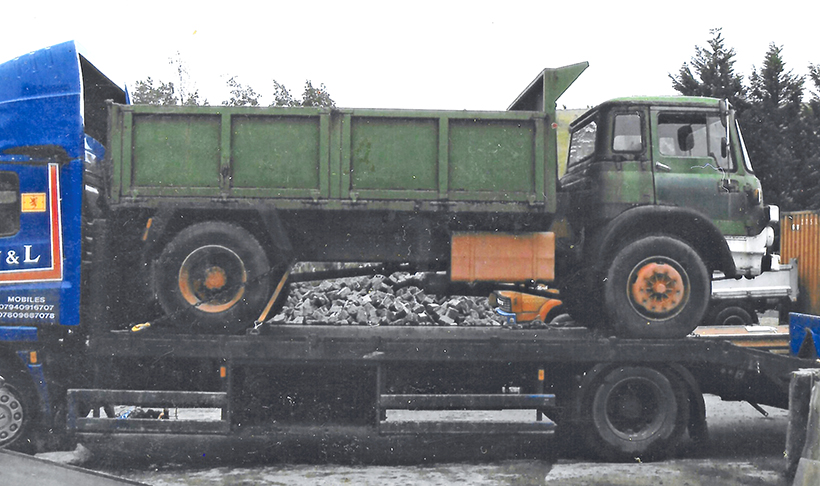
As usual, the replacement cab, though saveable, did need a certain amount of rectification work; most of this was the usual-on-TK-cab floor and corner stuff, though the doorsteps at the back were very bad and needed “a lot of work” as did the wings due both to corrosion and damage.
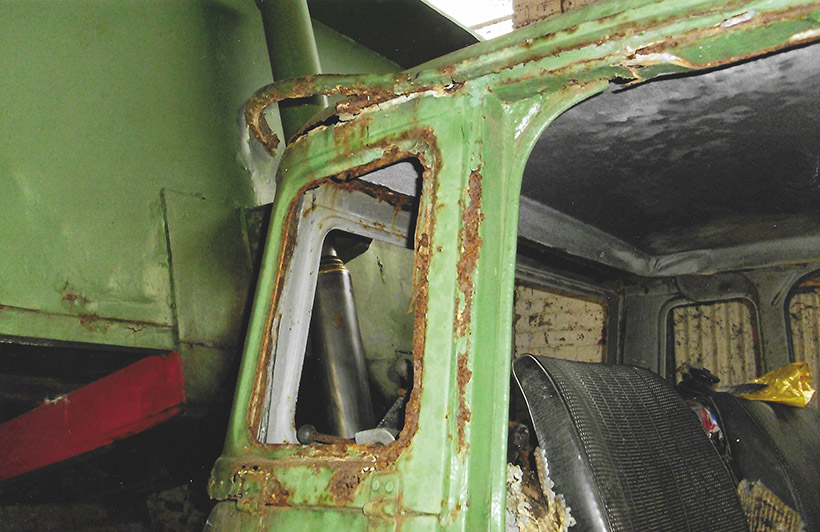
The tipper body, by contrast, was in “not too bad” condition, and needed little more than some localised repairs, though clearly more would have been needed if they hadn’t been going for a working lorry look. The chassis, similarly, was in good condition overall, though a couple of flitch plates needed renewing, and understandably, cleaning and rust-removal took some time and effort.
On the mechanical side, all the hubs were stripped out and relubricated and refurbished as required. The brakes, too were fully refurbished – it was a case of selecting the best parts from those on the lorry and those supplied with it, or when it came to safety-critical wear and tear items like brake shoes, replacing with new. A new radiator, supplied by Coventry-based JJ Radiators, was fitted.
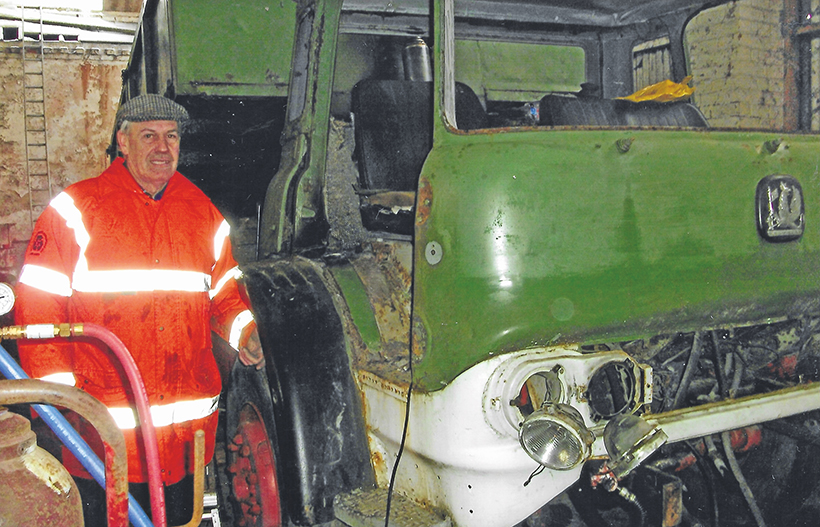
The ‘pile of bits’ also included a spare engine and gearbox of the original type; these were reused following careful checking, cleaning and servicing; however the team took advantage of having the engine and gearbox out and separated to fit a new clutch.
As is often the case with lorries like this, the wiring/electrical side needed a lot of work due to a combination of age, neglect and in-service modification! A complete new wiring loom was needed, along with new rear lights and a few other components, though the original speedometer was refurbished for reuse. In the interests of safety, new tyres have been fitted all round.

The cab interior has been extensively ‘improved’ though as with the rest of the lorry, a good working look was the aim. The seats have been recovered, and the original headlining cleaned up but overall, with two cabs to hand, it was a case of using the best parts from both to create one good one. In keeping with the working lorry look, the whole vehicle has been brush-painted.
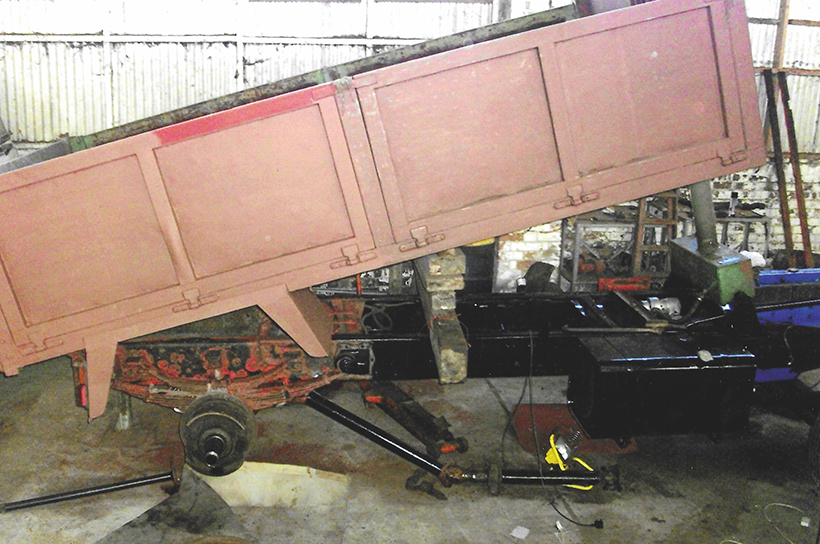
And that, essentially is it. Since completion the KM has been rallied regularly throughout the season, and while Simon, Len and co generally attend events that are relatively close to base, their central location does mean that quite a lot are within reach, and with the British Motor Museum at Gaydon just on the doorstep, they are regulars at the Classic & Vintage Commercials Show. Last year, they also attended Bedford 90, and several appearances are planned for 2022.
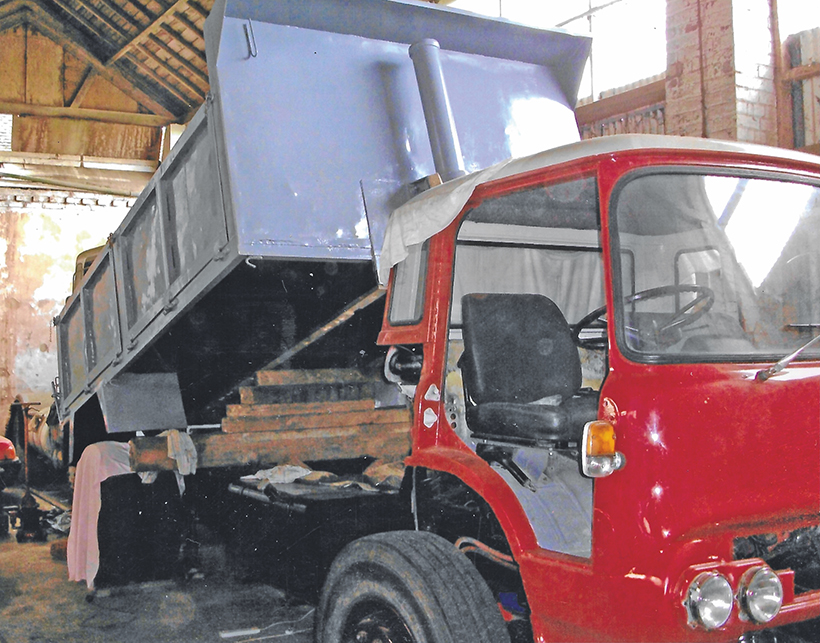
Conclusions
Though fleets certainly did buy and use Bedfords, the brand always appealed especially to independent operators who might have one, two or three lorries. They were cheaper to buy, and often more suitable than heavyweights for the type of work undertaken by builders, engineering companies, farmers, furniture removers and so on. The extensive dealer network – most Vauxhall car dealerships also handled Bedford – also meant parts and servicing/repair support were readily available. Many such vehicles survived ten, 15 or even 20 years, and several owners.
As I’ve mentioned before in CVC, my first job on leaving school was with a local Builder’s Merchant – it was only ever intended to be a short-term job while I figured out what I really wanted to do, but as a fill-in it was okay. Our depot had three tipper lorries – two Ford D Series and a truly horrendous Ford A Series which, though only three years old, would never start from cold in winter without a tow. These were used for delivery work within, roughly, a 20-mile radius of base.
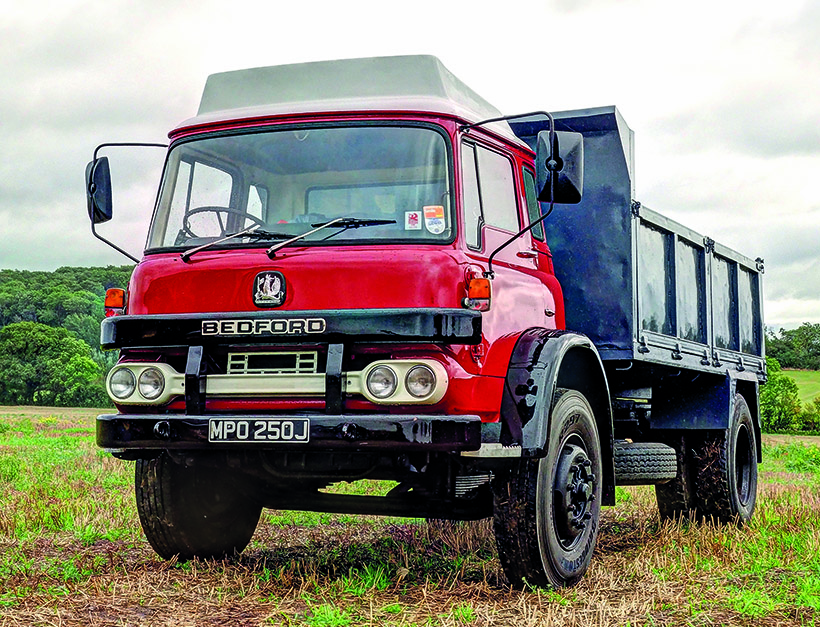
However, we also had access to two older lorries owned by a ‘contractor’ – though ‘we’ were actually the only firm Vic Payne Haulage (a father and son team) worked for! Both lorries were very secondhand and had been rebuilt by the Paynes. One was another Ford D Series 7½ tonner that was used as additional capacity on delivery work, and driven by Vic’s son.
The other, however, (“Brian’s lorry”) was a Bedford KM tipper, and that was used mainly on ‘direct delivery’ work – ie if a builder ordered a ‘full load’ of sand, aggregate or similar, Brian and the KM would collect same from a quarry (most of which were 30-40 miles away) and then take it straight to wherever it was needed. Brian and the KM would also bring loads of the same products into the depot for sale in smaller quantities.

By and large it did all that was asked of it without drama or fuss, even though it wasn’t doing a massive mileage by lorry standards, and for the type of work it was doing, this ten-year-old KM was a very cost-effective solution.
Thinking back 40plus years, Simon’s KM really does replicate Brian’s lorry in almost every respect; the presentable but hand-painted look, the slightly knocked-about tipper body and the lack of sign-writing are all exactly how I remember Brian’s lorry, and how I recall many other similar vehicles being used at the time. The only difference is that Simon’s is a lot cleaner! Working lorries like this were a vital part of the road-haulage scene, many businesses would have struggled without them, and this side of the industry should surely be represented within preservation.
This article comes from a recent issue of Classic & Vintage Commercials, and you can get a brilliant, money-saving subscription to the magazine simply by clicking HERE

